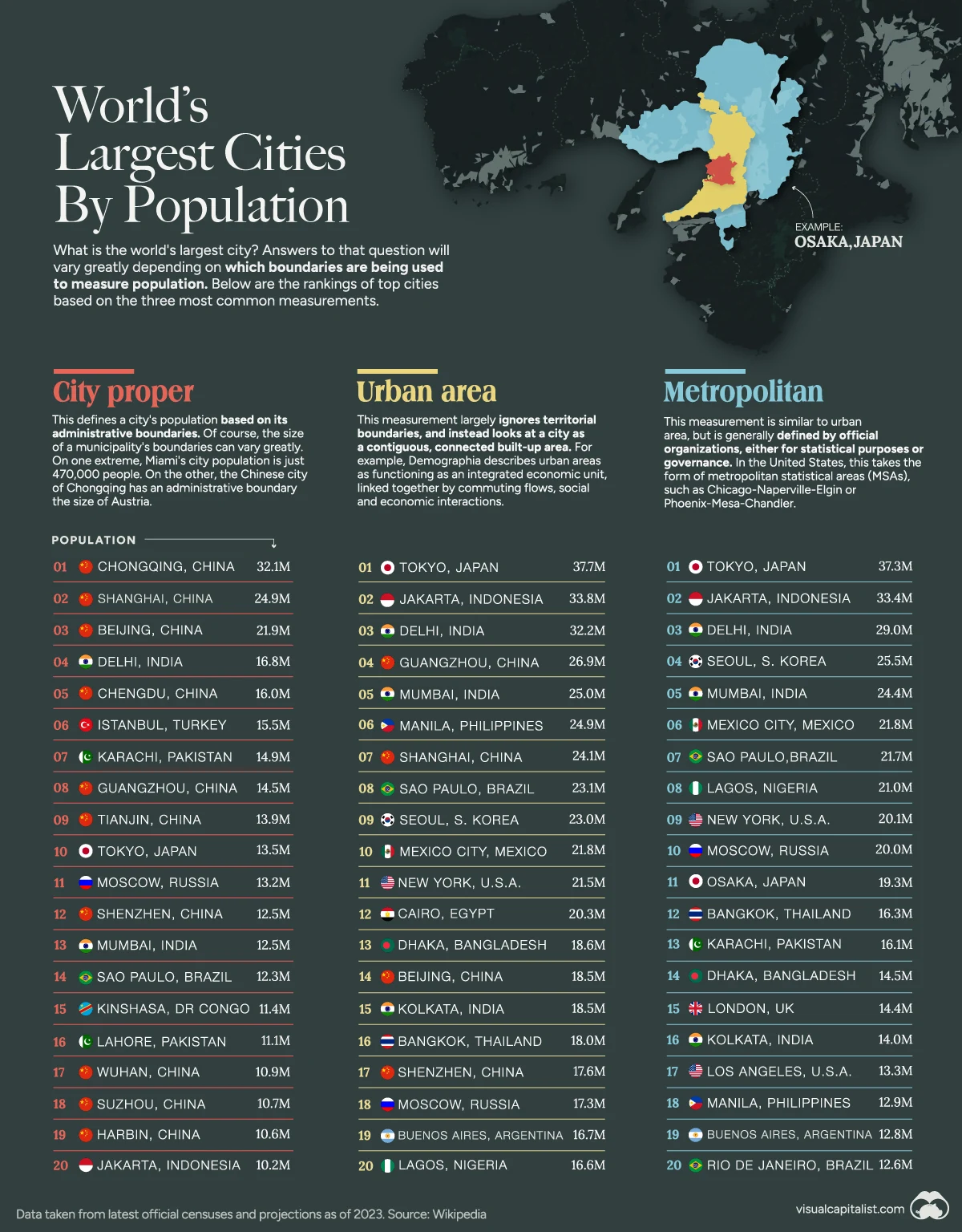In the past century, the phenomenon of rapid urbanization has significantly reshaped our world.
Presently, over 4.3 billion individuals, equivalent to 55% of the global populace, reside in urban environments.
However, identifying the largest city is a complex task, heavily contingent on the delineation of city limits and the methodology employed to gauge their populations.
Using data sourced from the most recent official censuses, the visualcapitatlist team arranged the most populated cities using the three prevailing metrics.
The Largest Cities by City Proper
As defined by the United Nations, a "city proper" refers to the singular political jurisdiction encompassing the historical nucleus of the city.
Applying this criterion, the city of Chongqing in China emerges as the frontrunner, boasting an administrative boundary comparable in size to that of Austria and a thriving urban populace numbering 32.1 million.
The Largest Cities by Urban Area
This approach largely disregards political territorial confines and regards a city as a coherent, interconnected expanse of developed land.
Demographia.com characterizes urban areas as operating as cohesive economic entities, interlinked through commuting patterns and dynamic social and economic interchanges.
By this criterion, Tokyo, with a population of 37.7 million, takes the top position in the ranking.
The Largest Cities by Metropolitan Area
Tokyo also holds the forefront in our concluding measurement.
This gauge bears a resemblance to the urban area metric but is typically established by official entities, either for statistical delineation or administrative purposes.
You can learn more about cities from the following books:

This post may contain affiliate links. As an Amazon Associate, I earn from qualifying purchases.
Comments
Post a Comment